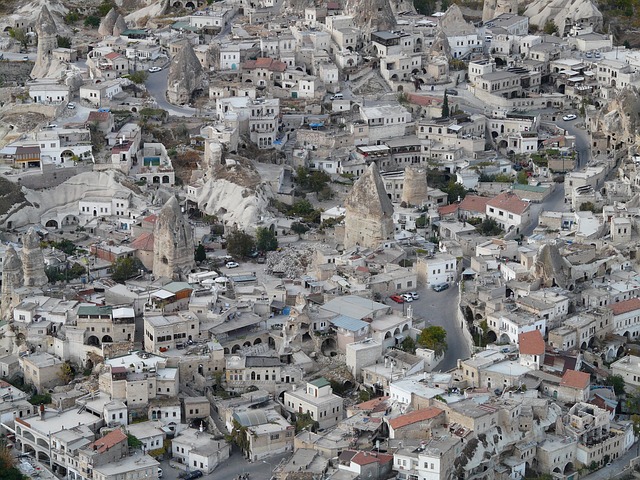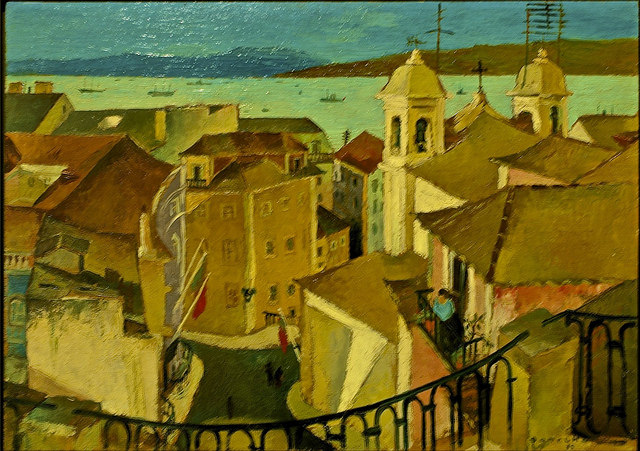

How does one define ‘place’? In architectural language, it is undoubtedly one of the most ambiguous terms. A place is not simply a space, or a location; it is but an amalgamation of numerous factors. Gautam Shah explains the definition of space and how to perceive it through the eyes of an architect. Shah is a consultant Interior Designer based at Ahmedabad, India, since 1970, and a highly respected former faculty member, School of Interior Design – Faculty of Design, CEPT University, Ahmedabad. His blogs on Interior Designing and Architecture are among the most widely read literature on these topics.
A Place is defined by markings. These could be natural features, alterations of natural features, or new implants. The markings could also be recognition of some geometric arrangement such as a centre, cross lines, triangulation, etc. When markings are made on a place, the intention of a revisit, but altered or implanted marks additionally denote the intention to reoccupy or indicate ownership. A single mark distinguishes a place, but several of them cover a territorial spread. Marking is primary act for acquisition of a territory, but one may not be in position to explain why, and how it actualized. Such actions could be intuitive acts or learned activities. A marked territorial spread is meant for exclusive ownership. An owned territory has characteristic spatial features for inhabitation, such as:
- environment conditions,
- dimensional accommodations,
- amenities and facilities,
- associations that personalize it,
- connections to other such spaces.
Possession and occupation of a space leads to social activity. It specifies the nature of interaction with others, privacy, degree of accessibility or isolation, aloofness, loneliness, alienation, participation, leadership, devotion, cohabitation, etc.

A domain is a combinatory idea of Place and Space. A domain could be a physical territory or an abstract effectuality over which there is some form of control. The control could be through possession, occupation, ownership, or authority. All domains have markings that highlight their size, character, identity, distinctiveness, exclusivity, knowledge, effectivity, and conformity.
1. In the case of territory, the controlled or dominated place is used as a space to survive and proliferate.
2. As abstract effectuality, it is an idea of a space, exploited to sustain and proliferates the myth of a place.

A domain is a sphere, area, orbit, field, arena, demesne, land region, or realm. A domain is zone for activity, identity, distinctiveness, exclusivity, knowledge, rulership, effectivity, communication, belonging, controls, ownership, rights, conformity. A domain is a particular environment or walk of life. It is a territory over which rule or control is exercised by a ruler or government. However, the strength or effectivity of the ruler or governor is rarely consistent, and the position shifting. So a domain is a very ambivalent term.
Domains have a focus, centric or eccentric. A domain is circular or spheroid, as its mass is spread in some balancing form around a focus. A domain is focussed inward as much as fringed outward. A domain is encountered from outside or inside but at a very close distance may not reveal its centrality or sphericality.

Domains as Physical territories or Abstract effectuality
A Domain with the physical territory is marked (defined), occupied (presence), and possessed (owned). Historically such territories have been occupied, naturally, forcefully or notionally (symbolically). Marking is the first personalization of the domain space and that gets various levels of social confirmation or legality. Such acceptance may remain suspect, as a more powerful authority can challenge it, and force evacuation. A domain as abstract effectuality is circumstantial, formed by a particular environment, belief or conduct. These constituent circumstances change with time, and so their effectiveness varies. There is no distinctive ownership, but an authority through acceptance or confirmation may exist. These domains are metaphysical or metaphorical entities, with an approximate or ethereal spread.

Domains as combined idea of Place and Space have, defining spread, environment, people, ideology, and control mechanism.
• Spread is seen in the extent of its effectiveness.
• Environment endows the spatial character.
• People inhabit it to flourish and proliferate.
• Ideology is the cultural pose through beliefs, customs, inspirations, inhibitions,
• Control mechanisms emerge from ownership.

A domain can also be defined as a manageable space that is within the limits of human cognition, inside the ambit of nominal physiological capacities, and the extendible reach capacities (including through devices). Domains are setting or locus for Human Behaviour. The setting becomes complete when supported by metaphysical elements like privacy, isolation, reverence, fear, autocracy, and reinforced by metaphoric elements like gestures, symbols, analogies.

Free Mason Society, Veggies (Vegetarians), Cults (Hare Rama Hare Krishna) Religions, are groups operating as metaphysical domains often without any territorial identity.
Graphics, symbols, signage, languages, codes, gestures (body language), form, proportions, colours, expressions, etc. are some of the allegorical presences. Art movements, fashion styles, literary movements create metaphoric domains. Some spatial features and environmental conditions often occur in concert, and so the presence of one metaphorically triggers the other. Historical monuments, places of reverence (temples, Ashrams), and memorials have such eminence. Nightclubs, amusement parks, exhibitions, public buildings like airports, also have abstracted elements.
Follow Gautam Shah Here
